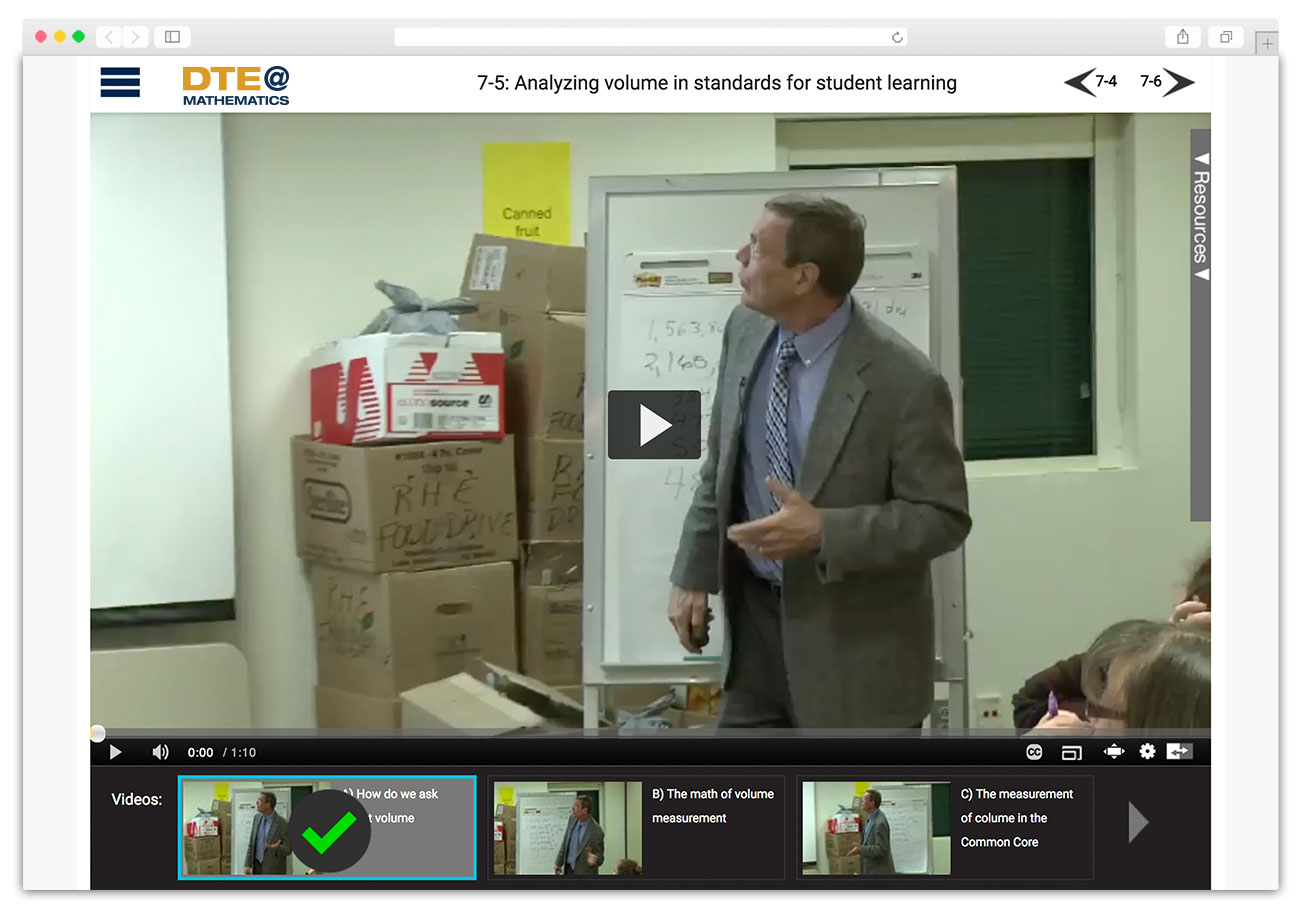Geometric-measurement - Session 7: Volume Learning Trajectory – Mathematical goals
Part 5: Analyzing volume in standards for student learning
Overview
This part involves an exploration of the way volume measurement is represented in the Common Core State Standards, including consideration of how the standards for mathematical practice relate to volume measurement.
Key Points
- There are different ways to think about (and teach) volume measurement, including “filling” (i.e., liquid capacity) and “packing” (i.e., figuring out how many of something a container holds).
- The Common Core State Standards do not expect students to be able to measure volume until Grade 5. However, the CCSS are not a curriculum; they do not outline the experiences students should have at various grade levels to help them develop an understanding of volume over time. Teachers must figure out what experiences students need at each of the grade levels to prepare them to meet the Grade 5 standards related to volume.
- The work students do on length and area measurement in the earlier grades provides a foundation for later work on volume measurement.
- Volume tasks, like other kinds of measurement tasks, provide useful opportunities to work on the standards for mathematical practice.
- Research suggests that it is more difficult for students to figure out the meaning of formulas they have already learned by rote than it is for students to develop understanding of how to solve a type of problem and then transition to using a formula.
